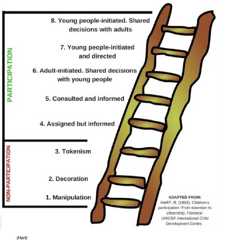- Home
- Student Success
- Support Programs
- Youth Engagement
- Resources by Subject Area
- Artificial Intelligence (AI)
- The Arts
- Computer Science
- English Language Arts
- Educational Technology
- Environment & Sustainability
- Financial Education
- Health and Physical Education
- Sexual Health Education
- Mathematics
- Science
- Social Emotional Learning (SEL)
- Social Studies
- Learning Standards & Graduation Requirements
- OSPI-Developed Social Studies Assessments
- Resources for K-12 Social Studies
- Civic Education
- Holocaust Education
- Washington History Day
- Temperance and Good Citizenship Day
- Social Studies Grant Opportunities
- Social Studies Laws and Regulations
- Social Studies Cadre of Educators
- Tribal Sovereignty (Since Time Immemorial)
- Early Learning Curriculum
- Elementary Curriculum
- Middle School Curriculum
- High School Curriculum
- High School Unit 1 Contemporary World Problems
- High School Unit 1 US History
- High School Unit 2 Contemporary World Problems
- High School Unit 2 US History
- High School Unit 3 Contemporary World Problems
- High School Unit 3 US History
- High School Unit 4 Contemporary World Problems
- High School Unit 4 US History
- High School Unit 5 US History
- High School Unit 6 US History
- Partnering with Tribes
- Implementation and Training
- Tribal Sovereignty Curriculum Resources
- Videos
- World Languages
- Learning Standards & Instructional Materials
- Graduation
- Testing
- State Testing
- Test Administration
- National Assessment of Educational Progress (NAEP)
- Timelines & Calendar
- Career & Technical Education (CTE)
- Special Education
- Data Collection
- Dispute Resolution
- Early Childhood
- Guidance for Families
- Behavior and Discipline
- Disagreements and Complaints about Special Education
- Eligibility for Special Education
- Evaluations
- How Special Education Works
- Individualized Education Program (IEP)
- Making a Referral for Special Education
- Need Assistance?
- Parent and Student Rights (Procedural Safeguards)
- Placement Decisions and the Least Restrictive Environment (LRE)
- Prior Written Notice
- Transition Services (Ages 16–21)
- What Is Special Education?
- Laws and Procedures
- Personnel Qualifications Guidance
- Program Improvement
- Special Education Community Complaint Decisions
- Washington’s Statewide IEP Project
- Support Programs
- Attendance, Chronic Absenteeism, and Truancy
- Building Bridges
- Center for the Improvement of Student Learning (CISL)
- Dual Credit Programs
- Early Learning
- Inclusionary Practices
- Inclusionary Practices Technical Assistance Network (IPTN)
- Learning Assistance Program (LAP)
- Multi-Tiered System of Supports (MTSS)
- Ninth Grade Success
- Student Discipline
- Student Transfers
- System and School Improvement
- Supporting LGBTQ+ Students
- Youth Engagement
- Access & Opportunity in Education
- Migrant and Multilingual Education
- Native Education
- Tribal Languages
- Types of Tribal Schools
- State-Tribal Education Compact Schools (STECs)
- Support for Indian Education and Culture
- Curriculum Support Materials
- Rules and Regulations
- Title VI Indian Education Programs — By District
- Contact Information
- Native Educator Community Page
- Native Student Success
- Tribal Consultation
- Students Experiencing Homelessness
- Institutional Education
- Military Kids
- Foster Care
- Children and Families of Incarcerated Parents
- Health & Safety
- School Safety Center
- Sexual Violence Prevention
- School Health & Nursing Services
- 2022 COVID-19 Student Survey Results
- Healthy Youth Survey
- Traffic Safety Education
- School Health Profiles
- Learning Alternatives
- Awards & Recognition
Youth Engagement
Research shows that youth engagement contributes to higher academic competency and motivation, improved graduation rates, and a positive school climate.
OSPI is committed to authentically engaging students and young adults to share their experience, strength and hope and help build statewide supports for schools to create environments that incorporate student engagement in meaningful ways.
Youth Engagement and Hart’s Ladder
Roger Hart’s ladder of children’s participation is adapted from Sherry Arnstein’s “ladder of citizen participation” (1969) which related to citizen involvement in planning processes in the United States.
Hart’s model (1992) has eight rungs and two main zones he calls ‘Non-Participation’ and ‘Degrees of Participation.’ The top five rungs, in the ‘Participation’ zone all represent different but valid forms of participation while the three lowest rungs are all designated as “non-participation.” Though authentic engagement doesn’t mean you should reach the top rung of the ladder, the goal is to stay out of the non-participation rungs.

Source: Ladder of Children's Participation – Organizing Engagement

Since 2004, MENTOR Washington has been a key supporter of mentoring programs across the state. They assist over 150 organizations by providing training, building capacity, offering funding, developing resources, and ensuring quality.
To learn more about their work or to find out how you can become a mentor, visit www.mentorwashington.org.
- Youth Engagement Resources
- Mentoring
- Youth Mentoring at Community for Youth
- Boys & Girls Club Year 2 Report
- Career Integrated Mentoring
- 5th Edition ofElements of Effective Practice for Mentoring -MENTOR's key publication, the Elements of Effective Practice for Mentoring™, provides guidelines based on research and expert approval for creating and maintaining high-quality youth mentoring programs. These standards help build strong and impactful mentoring relationships. The Fifth Edition was released in January 2025, and it includes the latest research, practices, and insights in the mentoring field.






